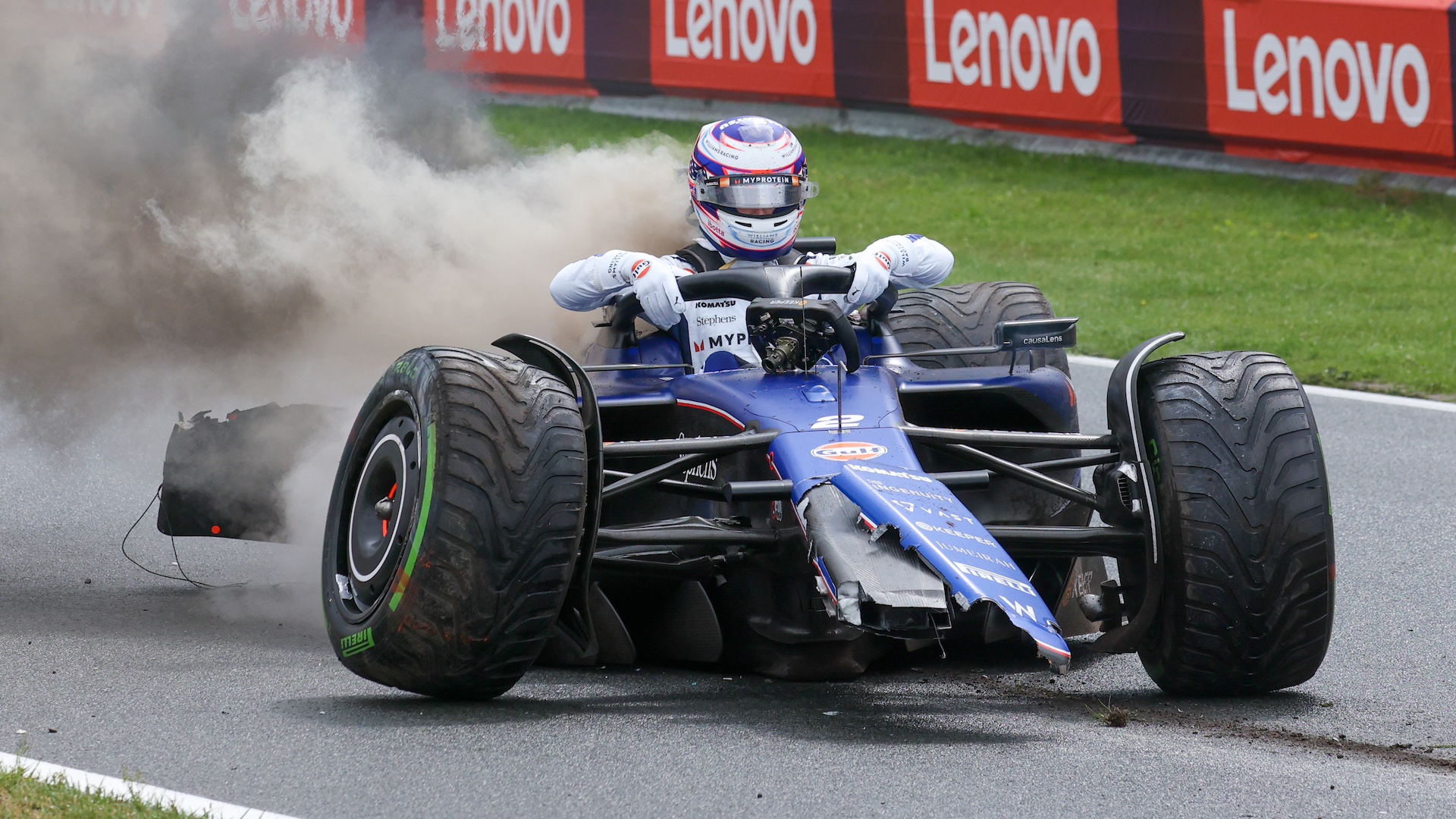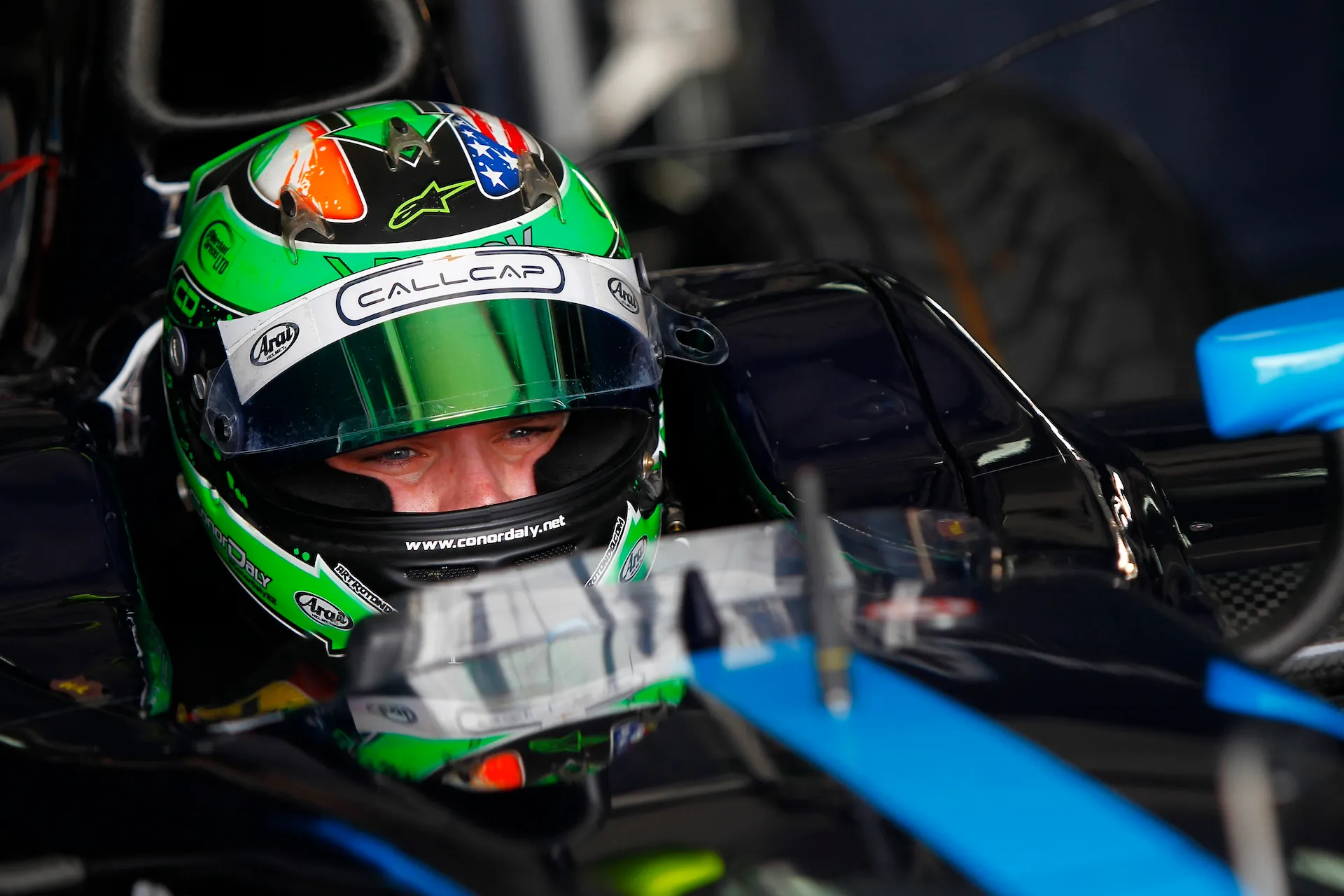

The last American driver to win a Formula 1 race was Mario Andretti at the 1978 Dutch Grand Prix. In the nearly five decades that have followed, the United States has produced a handful of international racing talents, but none strong enough to win a race, let alone another championship—and as Williams driver Logan Sargeant currently battles to keep his job for the rest of 2024, many U.S.-based F1 fans are asking why. Why is it so damn hard for America to produce a decent F1 driver?
The answer is complex, with its roots winding back through history and evolving alongside motorsport’s ever-changing technology—and it started long before F1 was born.
Motorsport evolved differently in America compared to Europe, plain and simple, and it comes down in large part to the evolution of transportation infrastructure. In Europe, centuries of dynasties and empires resulted in ample networks of decent roadways long before the invention of the automobile. By contrast, America was populated by groups of indigenous peoples who didn’t feel the same need to conquer the natural landscape.

As a result, when early automobiles started hitting the roads, the folks in Europe had plenty of decently maintained roads stretching from one city to the next—roads that could be turned into compelling street tracks—while America had to content itself with closed-course oval racing or makeshift tracks in areas like airfields. Different rulesets, championships, and mythologies developed with those racing venues in mind, building the foundation for our contemporary racing series.
But as World War II ended and modern motorsport truly kicked off in full force, it was impossible to build a career focusing on just one discipline. Drivers like Juan Manuel Fangio got their start rallying and moved up to competing in sports cars before finally competing in Grand Prix machinery. Mario Andretti, one of America’s most legendary racers, competed in stock car racing, open-wheel racing, and endurance racing before ever getting his shot behind the wheel of an F1 car.
The lack of specialization made it a lot easier for a driver to get a one-off shot in F1. In the 1950s through 1970s, there were no rules about how many cars a team had to run, or how many drivers could enter a race. If Team Lotus showed up to a track with an extra car, it could run Mario Andretti in the U.S. Grand Prix, Alberto Larreta in Argentina, Pedro Rodriguez in Mexico, or Gerhard Mitter in Germany. In exchange, full-time Lotus F1 drivers like Jim Clark and Graham Hill would dip off to America to try their hand at the Indianapolis 500.
This was also the era where America found its greatest success in F1, with Phil Hill and Mario Andretti winning championships and Americans like Dan Gurney, Peter Revson, and Richie Ginther all winning F1 races.



But as we entered the 1980s, motorsport overall has become more specialized. In 1985, F1 mandated that all teams could only enter two cars at maximum, wiping out the one-off race seats for American drivers at the USGP. Advancements in aerodynamics, ground effect, and technology made the cars more expensive, so teams wanted their drivers to be experienced in European single-seaters before they ever even looked at a Formula 1 car. Superlicenses began to strictly limit how a driver could qualify for F1. America had its own open-wheel series in the form of CART, the IRL, Champ Car, and IndyCar.
That specialization also resulted in the specialization of junior categories. In the modern motorsport era, many F1 teams have created junior driver development programs that spot and sign talented young drivers as literal children. If those teams are located in Europe or the United Kingdom, it goes without saying that their talent spotters are going to be more regularly exposed to European or UK drivers—and those are the drivers that make the cut.
Nowadays, aspiring American drivers end up inherently at a disadvantage. By the time a young American decides he wants to pursue F1 and is at a place in his life where he can commit to moving to a new continent, he’s already well into his teen years—and his European competition might already have been under the tutelage of Red Bull, Ferrari, or Mercedes driver trainers for years.
In the past few weeks, I’ve spoken to two Americans who made the jump to the F1 ladder: Max Esterson and Jak Crawford, who are racing in Formula 3 and Formula 2, respectively.
Esterson grew up in New York City and got his physical start in racing when he decided to try karting after years of iRacing. He didn’t move to England until he was 18, and it left him somewhat on the outside looking in; his F3 competitors have largely been racing longer than Esterson has, and many of them were able to secure great F3 seats thanks to their F1 junior program ties.
Crawford, too, told me he was a little surprised by the level of competition in Europe compared to America. Overseas, he said, there are far more opportunities for track time, more races to contest, more tracks packed into a relatively small area, and more young drivers actively competing for one of the 20 coveted F1 seats. It results in some seriously intense competition.
Basically, a highly skilled young American might kick ass in his home country but find it hard to adapt to the frankly chaotic pace of the F1 ladder scene thanks to distance and specialization.
So let’s bring this back around to Logan Sargeant. He started karting when he was eight years old; at age 15 he became the first American to win an FIA Karting World Championship title since Lake Speed took that distinction in 1978.
In his first season of open-wheel racing, the Formula 4 UAE Championship, Sergeant finished second overall. In the highly contested British F4, he came third in 2017. When he moved to Formula 3—the first step of the European junior ladder series to be truly international and not regional—he finished third.



However, in speaking to other junior drivers like Esterson and Crawford—as well as to Esterson’s father, who doubles as his son’s manager—the rigors of F3 and F2 are intense. Spending just one year in one of those categories isn’t enough; to really excel, it’s important to put in a second year.
In Sargeant’s first full year of F2, he won two races and finished on the podium two additional times to finish fourth in the overall championship. Then he jumped into Formula 1 the very next year.
It’s tough to judge a young driver in a situation like this; if an F1 seat becomes available to you, you’d be stupid to pass it up because you might benefit from an additional year in F2. In a year, that seat might be filled with a driver in a multi-year contract, and you’ll end up like F2 champion Théo Pourchaire: Twiddling your thumbs on the outskirts of F1, with no drive and no prospects for a seat.
But as Sargeant enters his second year of F1, it’s becoming clear that he definitely could have used that extra year in F2.
It can be easy to write Sargeant off as a “pay driver,” as someone whose family money made him a particularly exciting prospect for a financially struggling team. But the fact of the matter was that, in both karting and junior single-seater categories, Sargeant was good. He wasn’t the next coming of Max Verstappen, of course—but it’s not like he was finishing dead last in every F2 and F3 race. There was a reason he ended up on the radar of an F1 team.
Sargeant had a lot going in his favor: Generational wealth, talent, and the ability to start racing in FIA-sanctioned series at a young age. He also had a lot working against him: F1’s specialization, its intense pressures, and his “outsider” status compared to European-born racers.
Now that Logan Sargeant is on the cusp of losing his ride with Williams, American F1 fans are going through the same round of questions we asked when Alexander Rossi lost his seat with Manor, or when Scott Speed was dropped by Toro Rosso. Why aren’t our drivers good enough? Why can’t they secure top-tier seats? Who will be the next American World Champion?
There’s no doubt that another American racer will eventually conquer Formula 1. We just have to find a driver with the right combination of factors to finally make it work.
Got a tip? Email us at tips@thedrive.com